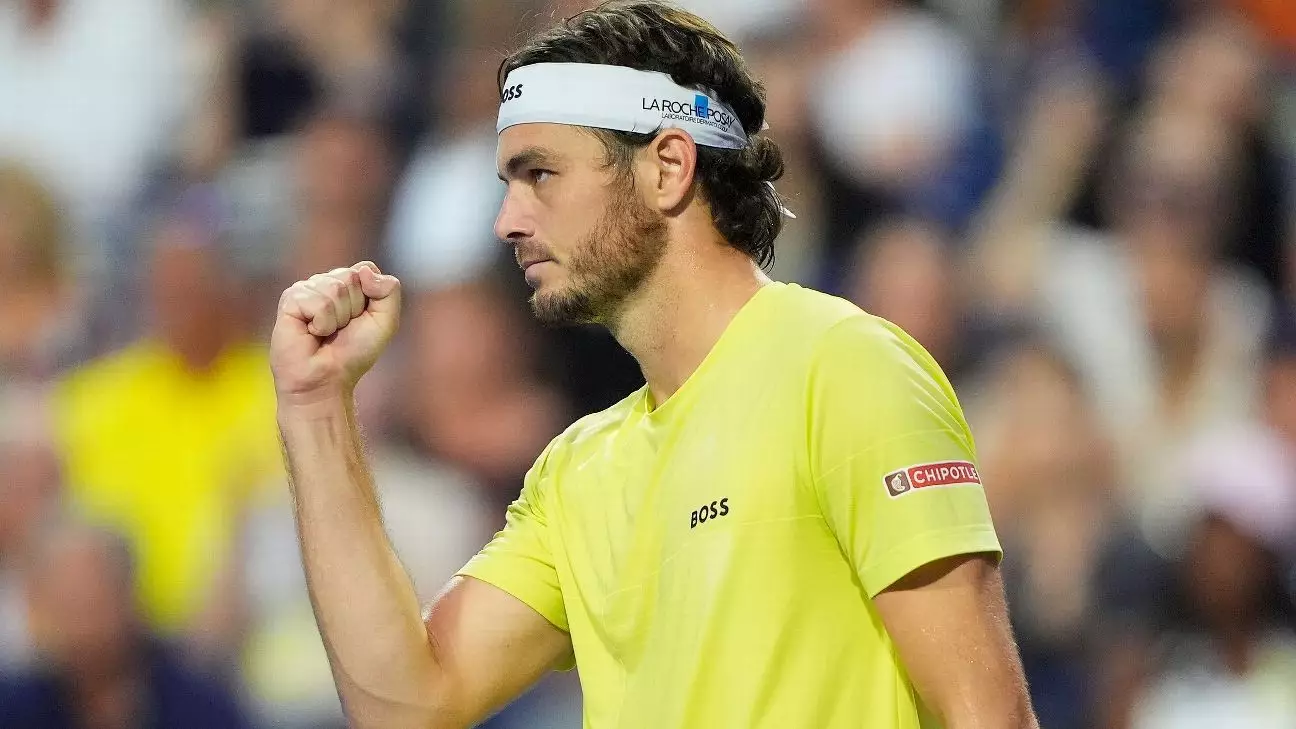The recent victories of Taylor Fritz and Ben Shelton at the National Bank Open mark a pivotal moment in American tennis history. It’s remarkable that these two young Americans are set to face off in the semifinals of an ATP Masters 1000 tournament—a feat not achieved in 15 years. This milestone underscores a renaissance for American men’s tennis, which has long been overshadowed by European and Australian dominance. Their wins are not just personal achievements; they symbolize a renewed national confidence in producing world-class talent capable of challenging the sport’s global elite.
Fritz’s commanding performance against Andrey Rublev was a testament to his resilience and precision. An aggressive serve and an unshakeable mental fortitude allowed him to execute a flawless victory. His 20 aces, including the final one that sealed the match, underlined his serving prowess, reinforcing his reputation as a formidable hard-court player. While statistics tell part of the story, Fritz’s composure under pressure and ability to control critical moments elevate his status beyond mere numbers. His performance indicates that he is on an ascending trajectory, aiming for his second Masters 1000 title and potentially transcending the limitations of past American players.
Ben Shelton’s achievement is equally significant. Reaching his first ATP Masters 1000 semifinal at just 22 demonstrates raw talent paired with burgeoning maturity. His victory over Alex de Minaur was methodical and confident, signaling that Shelton is more than just a promising prospect; he is a serious contender on the world stage. Shelton’s comments about Fritz being a “big-match player” reflect an admiration that hints at the camaraderie driving this new wave of American tennis. It’s rare to see such mutual respect coupled with competitive intensity—an emotional ingredient that can propel both players further in their careers.
Revitalizing American Tennis Legacies
The historical context lingers heavily over this new chapter. The last American to win a Grand Slam was Andy Roddick in 2003, a statistic that has haunted the collective psyche of American tennis fans. The current surge, embodied by Fritz and Shelton, suggests that American tennis is awakening from a long slumber. Their progression challenges the narrative of decline and instead offers a living proof that future champions emerge not just sporadically but as part of a new generation determined to restore American prominence.
Shelton’s remarks about the potential for another American Grand Slam victory carry weight. His optimism is rooted in tangible progress—that America’s tennis pipeline is not only full of promising talents but also deeply driven by the desire to reclaim international dominance. This enthusiasm contrasts sharply with the more subdued, past decades where American tennis often struggled for relevance amidst a sea of foreign contenders. Shelton’s confident declaration that “someone will” break through stirs hope among fans and pundits alike.
The Road Ahead: Competition and Expectations
The semifinal match between Fritz and Shelton promises to be a compelling clash of styles and personalities. Their prior encounter at Indian Wells provided a glimpse into their compatibility and competitiveness, but this upcoming contest will test their resilience and tactical adaptability at the highest stakes. The narrative is now steeped in national pride but also in individual quests for greatness—a rare convergence that can only elevate the sport’s appeal.
Meanwhile, the tournament’s other semifinal featuring Alexander Zverev and Karen Khachanov adds another layer of intrigue. Zverev’s experience and past triumphs, combined with Khachanov’s raw power, suggest a fiercely competitive final stretch. Yet, what makes this tournament uniquely inspiring is how these emerging American stars are challenging the traditional powerhouses. Their success is a reminder that tennis, much like any sport, evolves through fresh blood and relentless pursuit of excellence.
Ultimately, Fritz and Shelton’s breakthroughs are more than sporting milestones; they are signals of a cultural shift. American tennis, once perceived as a powerhouse, now finds itself at a crossroads where youthful talent can potentially lead a renaissance. The energy, confidence, and undeniable skill they demonstrate reignite hopes that the next American hero is already emerging—ready to take the global stage and make history again.


Leave a Reply